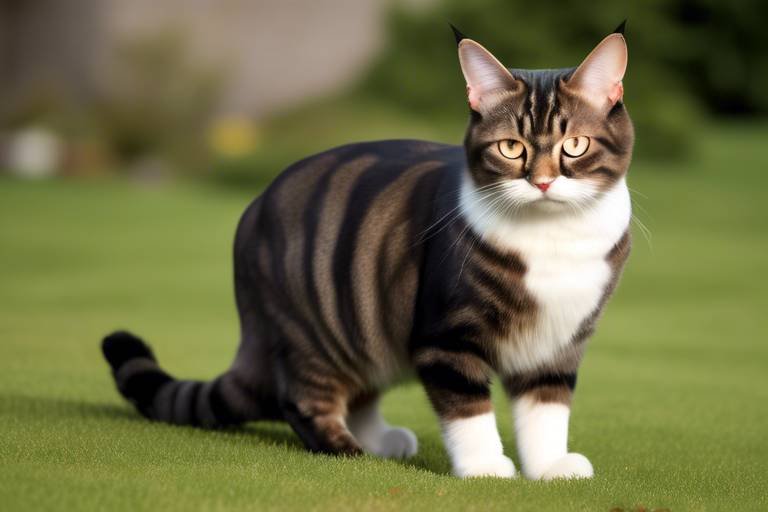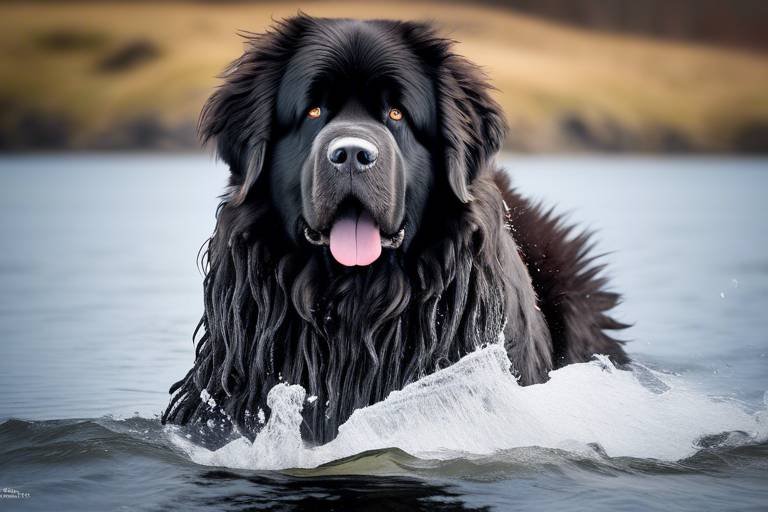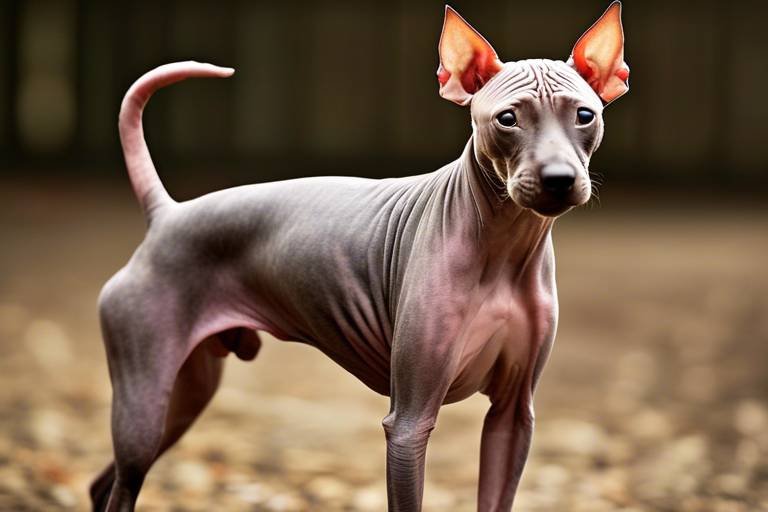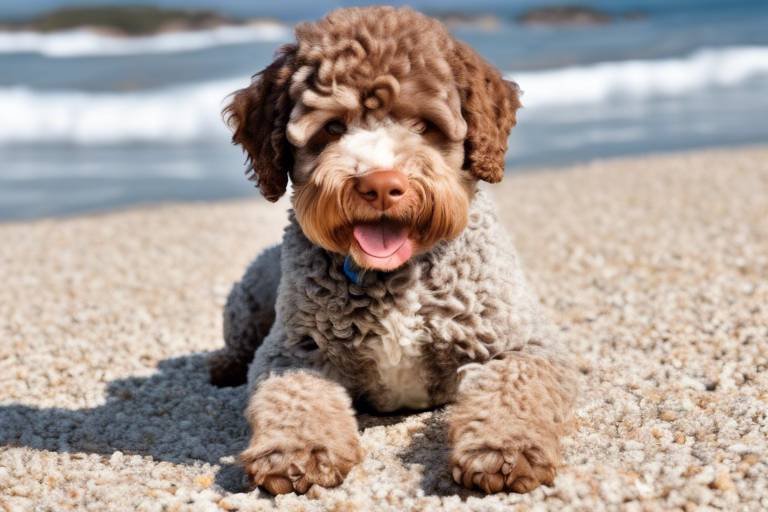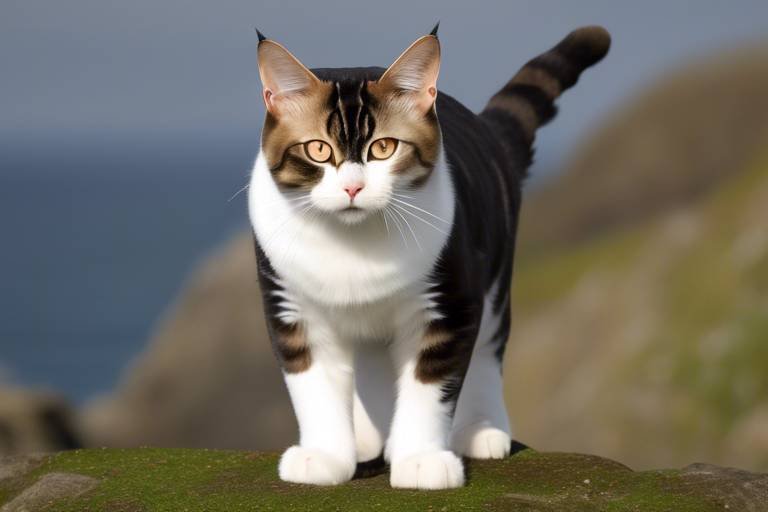Understanding the Unique Needs of Senior Pets by Breed
As our furry companions age, their needs evolve significantly, much like how we ourselves change as we grow older. Just as a fine wine matures with time, senior pets require specialized care that caters to their unique requirements based on breed. It's essential for pet owners to recognize that not all pets age the same way. For instance, a small breed like a Chihuahua may not face the same health challenges as a larger breed like a Great Dane. Understanding these differences can empower pet owners to provide the best possible care for their beloved companions during their golden years.
Senior pets often experience a range of health issues, dietary adjustments, and behavioral changes that vary by breed. These factors can significantly impact their quality of life, making it crucial for pet owners to be proactive in their care. For example, larger breeds may be more prone to joint issues, while smaller breeds might face dental problems more frequently. By tailoring care to meet these specific needs, pet owners can ensure that their senior pets remain healthy, happy, and active.
Moreover, the emotional bond between a pet and its owner deepens during these later years. The love and companionship that our pets provide are invaluable, and understanding their unique needs can enhance this relationship. By paying attention to breed-specific requirements—whether it's their dietary preferences, exercise routines, or even their emotional well-being—pet owners can create a nurturing environment that supports their pets as they transition into their senior years.
In this article, we will delve into various aspects of senior pet care, focusing on the distinct needs that arise based on breed. From common health issues to dietary requirements, exercise routines, and behavioral changes, we aim to equip pet owners with the knowledge they need to provide the best care possible. So, let’s embark on this journey together to better understand our senior pets and ensure they enjoy their twilight years to the fullest.
- What are the signs that my pet is aging? Look for changes in energy levels, mobility, and appetite. Behavioral changes like increased anxiety or confusion can also indicate aging.
- How often should I take my senior pet to the vet? Regular check-ups are crucial. Ideally, senior pets should see the vet at least twice a year for comprehensive health assessments.
- What dietary changes should I make for my senior pet? Focus on high-quality, easily digestible food with appropriate nutrients. Consult your veterinarian for breed-specific recommendations.
- How can I help my senior pet stay active? Engage in gentle exercises like short walks or play sessions tailored to your pet's physical abilities. Always consult with your vet before starting a new exercise routine.
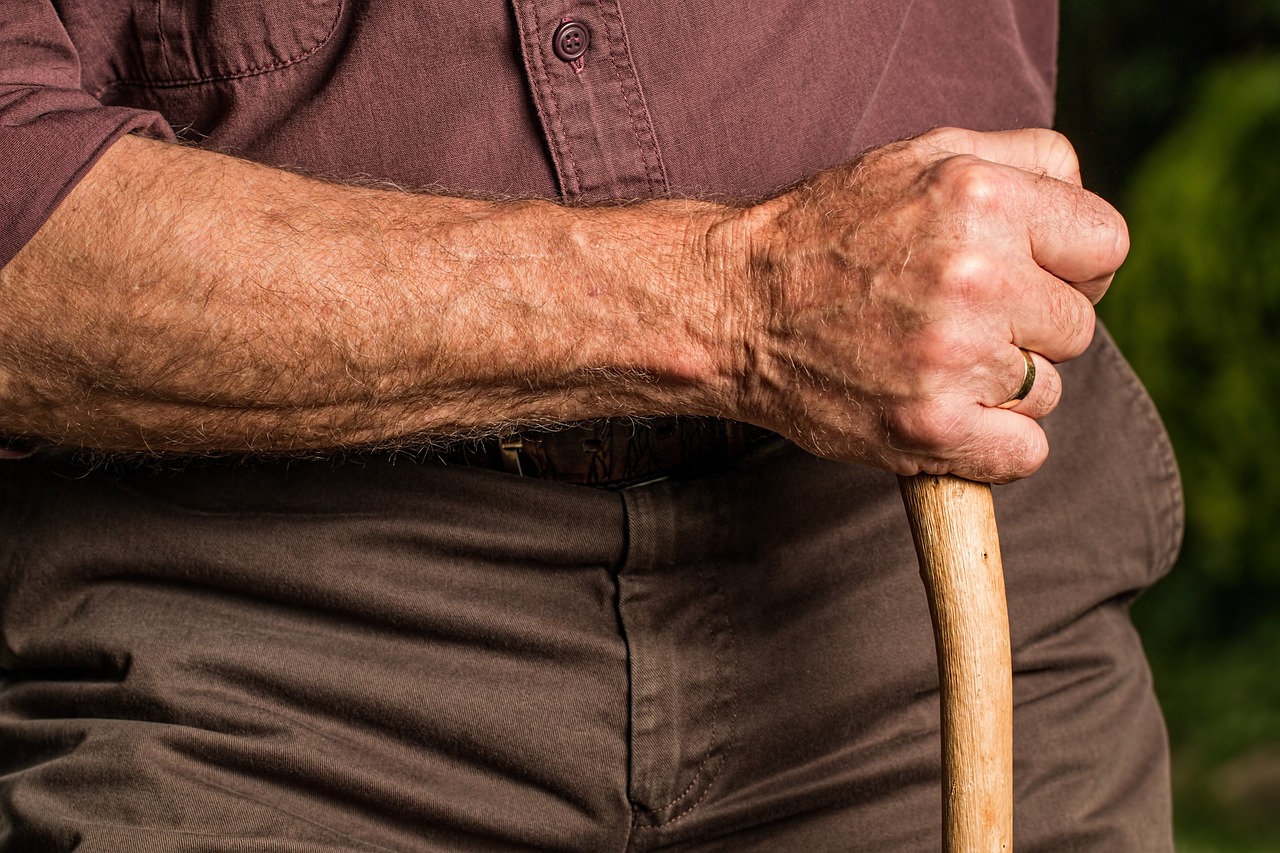
Common Health Issues in Senior Pets
As our furry companions age, they often face a myriad of health challenges that can significantly impact their quality of life. It's essential for pet owners to be aware of these issues to provide the best care possible. Different breeds may exhibit unique health concerns, and understanding these can help in early detection and management.
One of the most prevalent issues in senior pets is arthritis. This painful condition affects the joints, leading to stiffness and decreased mobility. Larger breeds, such as Golden Retrievers and German Shepherds, are particularly susceptible due to their size and weight. On the other hand, smaller breeds like Chihuahuas may also suffer but often display different symptoms, such as reluctance to jump or climb stairs.
Another common health concern is obesity, which can exacerbate other conditions like arthritis and diabetes. Senior pets may become less active, leading to weight gain. It's crucial for pet owners to monitor their pets’ weight and adjust their diet accordingly. For example, breeds like Beagles and Cocker Spaniels are notorious for their love of food, making them more prone to obesity. Regular vet check-ups can help in keeping their weight in check.
Additionally, senior pets often experience cognitive decline, similar to dementia in humans. This can manifest as disorientation, changes in sleep patterns, and increased anxiety. Breeds such as Border Collies and Boxers may show these signs earlier than others. It's important for owners to create a stimulating environment to help combat cognitive decline.
Here is a brief overview of common health issues by breed:
| Health Issue | Common Breeds Affected |
|---|---|
| Arthritis | Golden Retrievers, German Shepherds |
| Obesity | Beagles, Cocker Spaniels |
| Cognitive Decline | Border Collies, Boxers |
Lastly, kidney disease is another significant concern for senior pets. This condition can affect any breed but is particularly common in Persian cats and Miniature Schnauzers. Regular blood tests can help monitor kidney function and detect any issues early.
In conclusion, being proactive about your senior pet's health is crucial. Regular veterinary check-ups, a balanced diet, and awareness of breed-specific health issues can lead to a happier, healthier life for your aging companions.

Dietary Requirements for Aging Breeds
As our furry companions enter their golden years, their nutritional needs undergo significant changes. Just like humans, senior pets require a diet that caters to their specific health concerns and lifestyle adjustments. It's essential to recognize that different breeds may have unique dietary requirements that can impact their overall well-being. For instance, larger breeds like Great Danes and Saint Bernards may be more prone to joint issues, necessitating a diet rich in omega fatty acids to support joint health. On the other hand, smaller breeds such as Chihuahuas and Pomeranians might require more calorie-dense food to maintain their energy levels.
When considering the dietary needs of senior pets, it's crucial to focus on high-quality ingredients that provide essential nutrients. A balanced diet should include:
- Protein: Senior pets often need higher protein levels to maintain muscle mass, especially in breeds prone to muscle loss.
- Fiber: Increased fiber can aid digestion and help prevent obesity, which is a common concern in aging pets.
- Vitamins and Minerals: Key vitamins like E and C, along with minerals such as calcium and phosphorus, support immune function and bone health.
Moreover, hydration is a critical aspect of a senior pet's diet. Older pets may be less inclined to drink water, which can lead to dehydration. Therefore, incorporating wet food into their diet can help ensure they receive adequate moisture. Additionally, some breeds may benefit from specialized diets tailored to their health conditions. For example, pets with kidney issues may require a diet lower in protein and phosphorus.
To illustrate the varying dietary needs across different breeds, the following table outlines some common breeds and their specific dietary considerations:
| Breed | Dietary Considerations |
|---|---|
| Golden Retriever | High protein for muscle maintenance, omega fatty acids for joint health |
| Bulldog | Weight management, fiber-rich foods to promote digestion |
| Shih Tzu | Calorie-dense food, eye health supplements |
| Beagle | Controlled portions to prevent obesity, joint support nutrients |
Ultimately, understanding the unique dietary requirements of senior pets by breed can significantly enhance their quality of life. By providing the right balance of nutrients, pet owners can help their aging companions thrive during their later years. It’s always wise to consult with a veterinarian to create a tailored feeding plan that caters to your pet's specific needs, ensuring they receive the best possible care as they age.
Importance of Weight Management
Weight management is a critical aspect of caring for senior pets, and it can truly make a world of difference in their quality of life. As our furry companions age, their metabolism slows down, and their activity levels often decrease. This combination can lead to unwanted weight gain, which can exacerbate existing health issues or even create new ones. For instance, obesity in senior pets can lead to joint problems, diabetes, and heart disease, making it essential for pet owners to pay close attention to their pets' weight.
Each breed has its own unique predispositions when it comes to weight gain. For example, larger breeds like Golden Retrievers or German Shepherds may be more prone to hip dysplasia, which can be aggravated by excess weight. Meanwhile, smaller breeds such as Chihuahuas or Pomeranians may struggle with dental issues and other health problems that can be worsened by obesity. Therefore, understanding the specific weight management needs of your pet's breed is crucial.
To effectively manage your senior pet's weight, consider the following strategies:
- Regular Vet Check-ups: Regular veterinary visits can help monitor your pet's weight and overall health. Your vet can provide tailored advice based on your pet's breed and individual health concerns.
- Portion Control: Adjusting portion sizes according to your pet's specific caloric needs is essential. This means measuring their food and being mindful of treats, which can add up quickly.
- Exercise: Engaging in regular, low-impact exercise is vital for maintaining a healthy weight. Activities like short walks, gentle play, or swimming can be great options, depending on your pet's abilities.
In addition to these strategies, it's important to monitor your pet's body condition score (BCS). This score helps assess whether your pet is underweight, at a healthy weight, or overweight. You can evaluate your pet's BCS by feeling their ribs and checking for a defined waist. If your pet's ribs are hard to feel or if they don't have a noticeable waist, it may be time to reconsider their diet and exercise routine.
Ultimately, weight management is not just about keeping your pet looking good; it’s about ensuring they can enjoy their golden years to the fullest. By taking the time to understand your senior pet's unique needs and making the necessary adjustments, you can help them lead a healthier, happier life.
- What are the signs that my senior pet is overweight? Look for a lack of a waist, difficulty in feeling ribs, and reduced mobility. If you notice these signs, consult your veterinarian.
- How much should I feed my senior pet? The amount can vary greatly depending on the breed, size, and activity level. Always consult your veterinarian for personalized recommendations.
- Can I give my senior pet treats? Yes, but moderation is key! Choose healthy treats and factor them into your pet's overall caloric intake.
Caloric Needs by Breed
When it comes to the caloric needs of senior pets, it's essential to recognize that not all breeds are created equal. Just like humans, pets have different metabolic rates and energy requirements based on their size, activity level, and breed characteristics. For instance, a Chihuahua will have vastly different caloric needs than a Great Dane. Understanding these differences is crucial for maintaining a healthy weight and overall well-being in your aging furry friend.
As pets age, their metabolism tends to slow down, which can lead to weight gain if their caloric intake isn't adjusted accordingly. On average, senior pets might require about 20% fewer calories than their younger counterparts. However, this percentage can vary significantly depending on the breed. Here's a quick breakdown of the approximate daily caloric needs for some common breeds:
| Breed | Average Weight (lbs) | Daily Caloric Needs |
|---|---|---|
| Chihuahua | 5-6 | 150-200 |
| Beagle | 20-30 | 400-600 |
| Labrador Retriever | 55-80 | 800-1200 |
| Great Dane | 100-200 | 1500-2500 |
As you can see from the table above, larger breeds require significantly more calories than smaller breeds. However, the key is not just to focus on the quantity of food but also the quality. Senior pets benefit from diets that are rich in high-quality protein to maintain muscle mass, as well as essential fatty acids to support joint health. Additionally, fiber is crucial for digestive health, especially in breeds prone to obesity.
It's also important to note that individual pets may have unique needs based on their health conditions, activity levels, and lifestyle. For example, a senior dog that enjoys regular walks may need more calories than one that prefers lounging around the house. Therefore, it's wise to consult with your veterinarian to determine the most appropriate caloric intake for your senior pet based on their specific breed and lifestyle.
In conclusion, understanding the caloric needs of senior pets by breed is a vital part of ensuring their health and longevity. By adjusting their diet appropriately, you can help your furry companion maintain a healthy weight and enjoy their golden years to the fullest.
- How do I know if my senior pet is overweight? Look for visible signs such as difficulty in feeling their ribs, a lack of waistline, or reduced mobility. A vet can help assess their weight accurately.
- Should I change my pet's diet as they age? Yes, senior pets often require specialized diets that cater to their changing nutritional needs.
- How can I ensure my senior pet gets enough exercise? Engage in gentle activities like short walks or play sessions that match their energy level and physical capability.
Essential Nutrients for Senior Pets
As our furry companions age, their bodies undergo significant changes that require careful attention to their nutritional needs. Just like humans, senior pets need a balanced diet that caters to their unique health requirements. This is especially true for breeds that may be predisposed to certain health conditions. For instance, larger breeds like Great Danes may face joint issues, while smaller breeds such as Chihuahuas might experience dental problems. Thus, understanding the essential nutrients that support aging pets is crucial for maintaining their health and vitality.
One of the most important nutrients for senior pets is protein. As pets age, their muscle mass tends to diminish, making it vital to provide high-quality protein sources to support muscle maintenance and overall body function. Additionally, senior pets often require omega-3 fatty acids, which can help reduce inflammation and support joint health. Fish oil is an excellent source of these fatty acids, making it a beneficial addition to their diet.
Moreover, fiber plays a key role in digestive health for senior pets. As their metabolism slows down, a diet rich in fiber can aid in digestion and help prevent constipation. Foods that include ingredients like pumpkin or sweet potatoes are excellent sources of fiber. Alongside fiber, senior pets also benefit from antioxidants, which help combat oxidative stress and support the immune system. Ingredients such as blueberries and spinach are packed with antioxidants and can be easily incorporated into their meals.
Another vital nutrient is glucosamine, particularly for breeds prone to joint issues. This compound helps maintain cartilage and joint health, making it easier for senior pets to stay active and mobile. Many pet foods now include glucosamine as a standard ingredient, but pet owners can also consider supplements if needed.
To ensure that senior pets receive the right balance of these nutrients, pet owners should consult with their veterinarian. A veterinarian can recommend specific diets tailored to a pet's breed, age, and health status. Additionally, keeping an eye on the caloric intake is essential, as senior pets tend to be less active and may require fewer calories than their younger counterparts.
In summary, a well-rounded diet for senior pets should focus on:
- High-quality protein for muscle maintenance
- Omega-3 fatty acids for joint health
- Fiber for digestive support
- Antioxidants for immune system support
- Glucosamine for joint care
By understanding and addressing these essential nutrient needs, pet owners can significantly enhance their senior pets' quality of life, ensuring they remain healthy and happy during their golden years.
- What are the signs my senior pet needs a dietary change? Look for changes in weight, energy levels, and digestive health.
- Can I feed my senior pet human food? Some human foods are safe, but consult your vet to ensure they meet your pet's nutritional needs.
- How often should I feed my senior pet? Many senior pets benefit from smaller, more frequent meals throughout the day.
- Should I consider supplements for my senior pet? Yes, supplements like glucosamine can be beneficial, but always consult your vet first.
Exercise and Activity Levels
Regular exercise is not just a luxury for senior pets; it's a necessity! As our furry friends age, their bodies undergo various changes that can affect their mobility and overall health. Different breeds have varying energy levels and exercise requirements, which means that what works for one pet might not be suitable for another. For example, a Golden Retriever may still have a lot of energy well into its senior years, while a Bulldog might prefer a more laid-back routine. It's crucial to tailor exercise plans to meet these unique needs.
Engaging in regular physical activity can help maintain a senior pet's muscle tone, support joint health, and improve cardiovascular fitness. However, it's essential to strike the right balance. Too much exercise can lead to exhaustion or injury, while too little can result in weight gain and decreased mobility. A great way to start is by observing your pet's behavior during walks or playtime. Are they eager to continue, or do they seem to tire quickly? This can help you gauge their exercise tolerance.
Some excellent forms of exercise for senior pets include:
- Short Walks: Aim for 10-15 minute walks, adjusting the pace to your pet's comfort level.
- Gentle Play: Engaging in light games, like fetch with a soft toy, can stimulate them without overexerting.
- Swimming: For breeds that enjoy water, swimming is a low-impact exercise that can be very beneficial.
- Interactive Toys: Puzzle toys can keep their minds sharp while encouraging movement.
Moreover, consider the environment when planning exercise. A flat, non-slippery surface is ideal for senior pets, as it minimizes the risk of falls. If your pet has mobility issues, you might want to explore options like physical therapy or hydrotherapy, which can provide tailored exercise regimens that cater to their specific needs.
In conclusion, keeping senior pets active is crucial for their health and happiness. By understanding their unique exercise requirements based on breed and individual health conditions, you can help your furry companions lead a fulfilling life during their golden years.
Q1: How much exercise does my senior pet need?
A1: It varies by breed and individual health. Generally, aim for short walks or light play sessions, adjusting based on your pet's energy levels.
Q2: What signs should I look for to know if my senior pet is overexerted?
A2: Look for signs of fatigue, excessive panting, reluctance to continue, or limping. If you notice any of these, it’s time to take a break.
Q3: Are there specific exercises I should avoid with senior pets?
A3: High-impact activities like jumping or running on hard surfaces can be hard on aging joints. Focus on low-impact exercises instead.
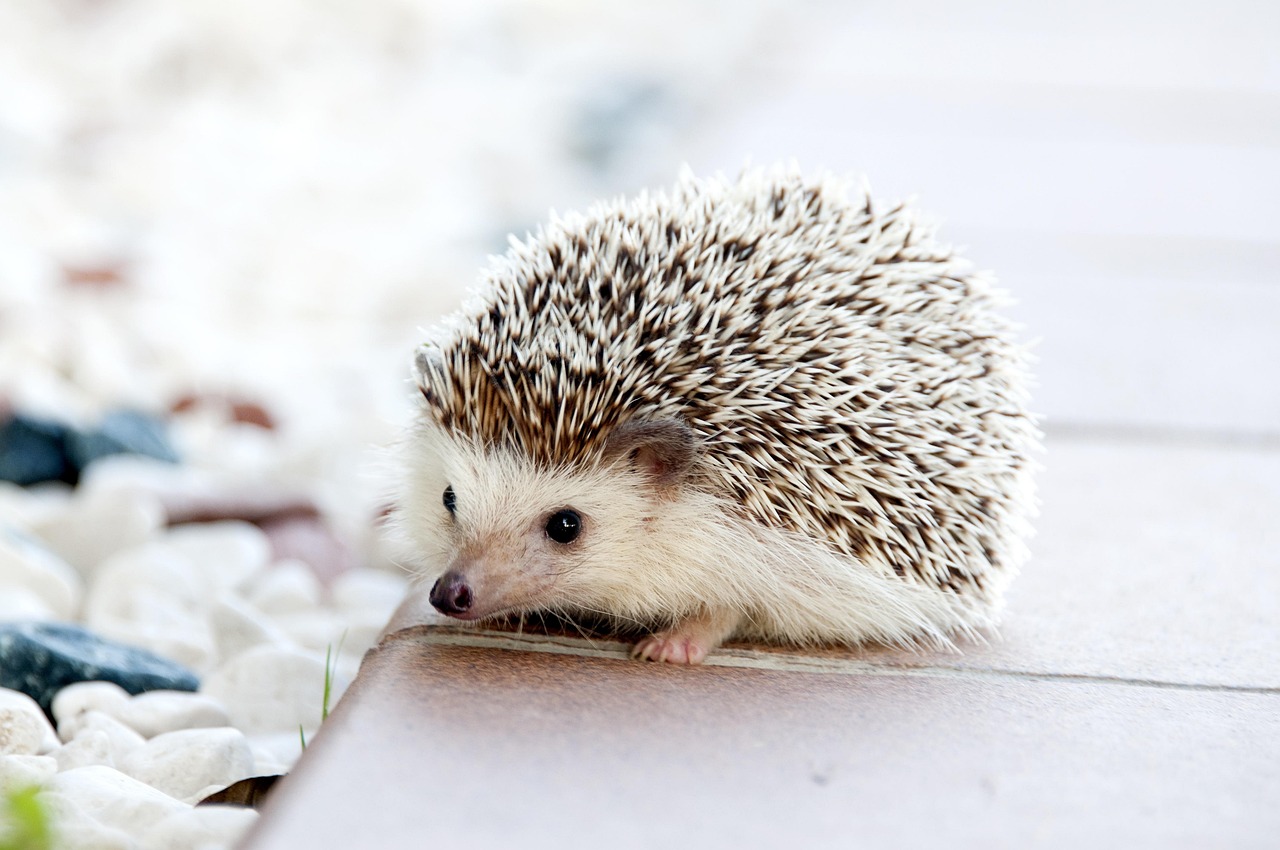
Behavioral Changes in Senior Pets
As our beloved furry companions age, they undergo a myriad of changes, not just physically but also behaviorally. It's essential for pet owners to recognize these shifts, as they can significantly impact the quality of life for senior pets. For instance, you might notice that your once playful pup now prefers to lounge around more often. This change is not merely a sign of laziness; it may indicate discomfort, reduced energy levels, or even the onset of arthritis. Understanding these behavioral changes can help you provide the best care and support for your aging pet.
Another common behavioral change in senior pets is increased vocalization. While some breeds are naturally more vocal than others, seniors may begin to bark, meow, or whine more frequently. This could be a sign of anxiety, confusion, or even pain. For example, dogs like Beagles and Dachshunds are known for their vocal tendencies, but when these breeds start to vocalize excessively, it may signal underlying issues that need addressing. Keeping an eye on these changes is crucial for maintaining their well-being.
Moreover, cognitive decline is a significant concern for older pets. Just like humans, pets can experience a form of dementia, which can lead to disorientation and altered behavior patterns. You might find your cat staring at a wall or your dog getting lost in familiar surroundings. These signs of cognitive decline can vary by breed, but they often manifest as:
- Increased confusion or disorientation
- Changes in sleeping patterns
- Decreased interaction with family members
- Loss of house-training skills
Addressing these behavioral changes requires a combination of patience, understanding, and proactive measures. For instance, establishing a consistent routine can help reduce anxiety and confusion. This routine could include regular feeding times, walks, and play sessions. Additionally, engaging your senior pet in mentally stimulating activities, such as puzzle toys or gentle training sessions, can help keep their minds sharp and alleviate some of the cognitive decline symptoms.
In conclusion, recognizing and understanding the behavioral changes in senior pets is vital for their overall health and happiness. By being attentive to their needs and adjusting their environment and routines accordingly, you can help your aging companions navigate their golden years with grace and comfort.
Q: How can I tell if my senior pet is experiencing cognitive decline?
A: Look for signs such as disorientation, changes in sleeping patterns, increased vocalization, and loss of house-training skills. If you notice these behaviors, consult your veterinarian for guidance.
Q: Are there specific breeds more prone to behavioral changes as they age?
A: Yes, certain breeds, like Border Collies and Labrador Retrievers, may exhibit more pronounced signs of cognitive decline. However, all breeds can experience behavioral changes as they age, so it's essential to monitor your pet closely.
Q: What can I do to help my senior pet with anxiety?
A: Creating a stable routine, providing a safe space, and using calming products like pheromone diffusers can help alleviate anxiety. Additionally, consult your veterinarian for potential behavioral therapies or medications.
Signs of Cognitive Decline
As our beloved pets age, just like us, they can experience changes in their cognitive function. Recognizing the is crucial for providing timely support and care. Different breeds may exhibit unique symptoms, but some common indicators can alert pet owners to potential issues. For instance, you might notice your furry friend becoming disoriented in familiar surroundings, which can be alarming. Imagine walking into a room and forgetting why you entered; now picture your pet experiencing that confusion daily. It’s heartbreaking!
One of the first signs of cognitive decline is often a change in behavioral patterns. This could manifest as increased anxiety or restlessness, where your pet seems unable to settle down. You might find them pacing back and forth or staring blankly at walls. Additionally, they may start to forget commands or routines they once mastered, such as sitting or going outside to relieve themselves. These lapses can be frustrating, but it’s essential to understand that they stem from a decline in mental acuity.
Another critical sign to watch for is a shift in sleep patterns. Senior pets may sleep more during the day and become restless at night, leading to disrupted sleep for both them and their owners. This alteration can be particularly challenging, as you might find yourself up at odd hours trying to soothe your furry companion. Furthermore, you may notice a decrease in their interest in activities they once loved, such as playing fetch or going for long walks. Instead, they might prefer to stay curled up on the couch, seemingly disinterested in the world around them.
To help you identify these signs more clearly, here’s a quick overview of common indicators of cognitive decline in senior pets:
- Disorientation: Getting lost in familiar spaces.
- Behavioral changes: Increased anxiety or restlessness.
- Forgetfulness: Difficulty remembering commands or routines.
- Altered sleep patterns: Sleeping more during the day, restless at night.
- Lack of interest: Reduced enthusiasm for activities they once enjoyed.
Understanding these signs is the first step in ensuring your senior pet receives the care they need. If you observe any of these behaviors, it’s vital to consult your veterinarian. They can provide valuable insights and recommend strategies to support your pet through this challenging phase of life. Remember, addressing cognitive decline early can help maintain your pet's quality of life, ensuring their golden years are as joyful as possible.
Q: What should I do if I notice signs of cognitive decline in my pet?
A: If you observe any signs of cognitive decline, it’s essential to consult your veterinarian. They can provide a thorough assessment and recommend appropriate treatment options or lifestyle adjustments.
Q: Are there specific breeds more prone to cognitive decline?
A: While cognitive decline can affect any breed, larger breeds and those with shorter lifespans tend to experience cognitive issues earlier than smaller breeds.
Q: Can cognitive decline be treated or managed?
A: Yes, there are various strategies to manage cognitive decline, including dietary changes, environmental enrichment, and medications that can help improve your pet's quality of life.
Q: How can I stimulate my senior pet's mind?
A: Engaging your senior pet with puzzle toys, training sessions, and interactive games can help keep their mind active and potentially slow cognitive decline.
Managing Anxiety and Stress
As our beloved pets age, they often face a myriad of changes that can lead to increased anxiety and stress. This is particularly true for certain breeds that may be more prone to anxiety-related issues. Just like us, pets can experience feelings of unease, especially when their routine is disrupted or when they encounter new environments. Imagine how unsettling it must be for them! It’s important to recognize that managing anxiety in senior pets is not just about addressing the symptoms, but also about understanding the underlying causes.
Different breeds exhibit varying behavioral patterns, which can influence how they react to stress. For instance, herding breeds like Border Collies may become anxious if they feel they are not fulfilling their instinctual need to herd, while toy breeds such as Chihuahuas might become overly attached to their owners, leading to separation anxiety. Recognizing these breed-specific tendencies can help in formulating a tailored approach to alleviate their stress.
One effective strategy for managing anxiety is to create a calm environment. This can include providing a safe space where your pet can retreat when feeling overwhelmed. Consider using calming products such as pheromone diffusers or anxiety wraps that can provide comfort. Additionally, maintaining a consistent routine can greatly reduce anxiety levels. Pets thrive on predictability, so try to keep feeding, walking, and playtime schedules as regular as possible.
Engaging in gentle, structured activities can also help to mitigate stress. For example, short walks or play sessions that are tailored to your pet's energy levels can provide both physical and mental stimulation. Activities like puzzle toys can keep their minds engaged, reducing anxiety by providing a distraction. It's essential to observe your pet's reactions and adjust the activities accordingly to ensure they are not overwhelming.
Moreover, it’s important to recognize the signs of anxiety in senior pets. Look out for behaviors such as excessive barking, pacing, or hiding. If you notice these signs, it may be helpful to consult your veterinarian. They can suggest behavioral therapies or medications that are suitable for your pet's specific breed and health condition. Remember, you are not alone in this journey; many pet owners face similar challenges.
In summary, managing anxiety and stress in senior pets requires a combination of understanding their unique needs and implementing effective strategies. By fostering a calm environment and engaging in appropriate activities, you can significantly enhance your pet’s quality of life, ensuring their golden years are filled with comfort and joy.
- What are common signs of anxiety in senior pets? Look for behaviors such as excessive barking, hiding, pacing, or changes in eating habits.
- How can I create a calming environment for my senior pet? Provide a safe space, use calming products, and maintain a consistent routine.
- Are there specific exercises that can help reduce anxiety? Gentle walks and engaging in puzzle toys can help keep their minds and bodies active.
- When should I seek veterinary advice for my anxious pet? If your pet’s anxiety seems severe or is affecting their quality of life, consult your veterinarian for guidance.

Veterinary Care for Senior Pets
As our furry companions age, their health care needs evolve significantly, making veterinary care for senior pets more crucial than ever. Regular check-ups become a vital part of ensuring that our beloved pets maintain a good quality of life. Senior pets are often more susceptible to various health issues, including arthritis, diabetes, and heart disease, which can manifest differently depending on the breed. For instance, a Golden Retriever may experience hip dysplasia, while a Persian cat might face kidney problems. Understanding these breed-specific vulnerabilities is essential for providing the most effective care.
Veterinarians recommend more frequent visits for senior pets, ideally every six months. During these visits, the veterinarian will conduct thorough examinations, which may include:
- Comprehensive physical exams
- Blood tests to check organ function
- Urinalysis for kidney health
- X-rays to assess joint and bone health
These assessments help in identifying potential health issues before they become serious. For example, early detection of dental disease can prevent pain and other complications. Additionally, pet owners should maintain a detailed health history, noting any changes in behavior, appetite, or mobility, which can provide valuable insights to the veterinarian.
Another critical aspect of veterinary care for senior pets is preventative health screenings. Certain breeds may require specific tests as they age. For example:
| Breed | Recommended Health Screenings |
|---|---|
| Boxer | Heart disease screening |
| Beagle | Thyroid function tests |
| Bulldog | Joint health evaluations |
| Persian Cat | Kidney function tests |
These tailored screenings are essential as they help in monitoring the pet's health and catching any issues early. Moreover, vaccinations should also be revisited during these veterinary visits. As pets age, their immune systems may weaken, necessitating adjustments in vaccination protocols. For example, a senior dog may not need certain vaccines as frequently as a younger dog, but may require others to ensure they remain protected against diseases.
In summary, veterinary care for senior pets is not just about treating ailments; it's about proactive health management. By understanding the unique needs of their pets based on breed and age, owners can work closely with their veterinarians to ensure their senior companions receive the best possible care. This partnership is vital in enhancing the quality of life for our cherished pets during their golden years.
Q: How often should I take my senior pet to the vet?
A: It is recommended to take senior pets to the vet every six months for regular check-ups and screenings.
Q: Are there specific vaccinations for senior pets?
A: Yes, vaccination needs can change as pets age, and your veterinarian can advise on the appropriate schedule.
Q: What are some signs that my senior pet needs to see a vet?
A: Look for changes in behavior, appetite, mobility, or any signs of discomfort, as these can indicate health issues.
Recommended Health Screenings
As our beloved pets age, their health needs become increasingly complex, making regular health screenings essential for maintaining their well-being. Different breeds may face unique health challenges, and understanding these can help pet owners make informed decisions about their senior pets' care. Regular check-ups allow veterinarians to catch potential issues early, ensuring that your furry friend remains happy and healthy in their golden years.
For instance, large breeds such as Great Danes and Saint Bernards are prone to certain conditions like hip dysplasia and heart problems. Therefore, it’s crucial to schedule screenings that focus on these areas. On the other hand, smaller breeds like Chihuahuas and Dachshunds may be more susceptible to dental issues and obesity. Regular dental check-ups and weight assessments are vital for these breeds. Here’s a breakdown of recommended health screenings based on common breed categories:
| Breed Type | Recommended Screenings |
|---|---|
| Large Breeds |
|
| Small Breeds |
|
| Medium Breeds |
|
Additionally, certain breeds may require specific tests as they age. For example, breeds like Boxers and Bulldogs are more prone to certain cancers, making it essential to have regular blood tests to monitor for any abnormalities. In contrast, breeds like the Beagle or Cocker Spaniel might benefit from regular ear examinations due to their floppy ears, which can trap moisture and lead to infections.
Don’t forget about vaccinations! Senior pets may have different vaccination needs than their younger counterparts, and these should be discussed during veterinary visits. Keeping an updated vaccination record is crucial for protecting your pet from preventable diseases.
In conclusion, ensuring that your senior pet undergoes the recommended health screenings based on their breed can significantly impact their quality of life. Regular veterinary visits not only help in early diagnosis and treatment but also provide pet owners with peace of mind knowing they are doing everything possible to care for their aging companions.
Q1: How often should I take my senior pet for health screenings?
A1: Generally, it's recommended to have senior pets examined at least twice a year. However, your veterinarian may suggest more frequent visits based on your pet's specific health needs.
Q2: Are there specific tests I should ask my vet about?
A2: Yes, you should discuss breed-specific screenings, such as hip evaluations for large breeds or dental check-ups for small breeds, to ensure comprehensive care.
Q3: What signs should I look for that indicate my pet needs a vet visit?
A3: Look for changes in behavior, appetite, weight, or mobility. If your pet seems lethargic or shows signs of discomfort, it's best to consult your veterinarian.
Vaccination Considerations for Seniors
As our beloved pets age, their healthcare needs evolve, and this includes their vaccination protocols. It's crucial to understand that senior pets, like humans, may have different immune responses compared to their younger counterparts. This means that what worked for them in their youth might not be sufficient as they enter their golden years. For instance, certain breeds may require adjusted vaccination schedules or even different vaccines altogether to ensure they maintain optimal health.
One of the primary considerations when vaccinating senior pets is their overall health status. Many senior pets may suffer from chronic conditions, such as kidney disease or heart problems, which can influence how their body reacts to vaccines. Therefore, it's always wise to consult with a veterinarian who can assess the specific health profile of your pet and recommend the best vaccination strategy tailored to their needs. This personalized approach helps in minimizing the risk of adverse reactions while maximizing the protective benefits of vaccinations.
Additionally, the type of vaccine is another important factor. For example, core vaccines, which are essential for all pets, typically include those for rabies, distemper, and parvovirus. However, senior pets may not need certain non-core vaccines, such as those for kennel cough or canine influenza, especially if they are less active or not frequently exposed to other animals. This selective approach can help reduce the stress and potential side effects associated with unnecessary vaccinations.
Moreover, the timing of vaccinations can also be critical. Some veterinarians recommend spreading out vaccines over a longer period rather than administering multiple shots at once. This strategy can ease the burden on a senior pet's immune system and allow for closer monitoring of any reactions. Here’s a simple table that outlines common vaccines and their recommended timing for senior pets:
| Vaccine | Recommended Timing | Notes |
|---|---|---|
| Rabies | Every 1-3 years | Core vaccine; required by law in many areas |
| Distemper | Every 3 years | Core vaccine; essential for all pets |
| Parvovirus | Every 3 years | Core vaccine; protects against a serious illness |
| Kennel Cough | As needed | Non-core; consider based on lifestyle |
| Canine Influenza | As needed | Non-core; consider based on exposure risk |
In conclusion, being proactive about your senior pet's vaccination schedule is essential. Regular veterinary check-ups will not only help in determining the appropriate vaccines but also in monitoring your pet’s overall health. By staying informed and engaged in your pet's healthcare, you can ensure they remain protected and healthy as they age, allowing them to enjoy their golden years to the fullest.
- How often should senior pets be vaccinated? It depends on the type of vaccine and your pet's health status. Consult your veterinarian for a tailored schedule.
- Are there risks associated with vaccinating senior pets? Yes, older pets may have different immune responses, so it's crucial to assess their health before vaccination.
- What vaccines are essential for senior pets? Core vaccines like rabies, distemper, and parvovirus are typically essential, while non-core vaccines depend on lifestyle and exposure risk.
- Can I give my senior pet vaccines at the same time? It's often recommended to spread out vaccinations to reduce stress on their immune system.

Creating a Comfortable Environment
Creating a cozy and safe environment for senior pets is crucial to their overall well-being. As pets age, they may face various physical challenges, including reduced mobility and sensitivity to temperature changes. Therefore, it's essential to tailor their living space to meet these unique needs. Think of it as setting up a comfortable haven that caters specifically to their golden years. Just like we appreciate a warm blanket on a chilly evening, senior pets also thrive in a nurturing environment.
One of the first steps in ensuring comfort is to provide appropriate bedding. For instance, older pets often suffer from joint pain or arthritis, making it vital to choose bedding that offers adequate support. Memory foam or orthopedic beds can be excellent choices, as they contour to the pet's body, alleviating pressure points. Additionally, consider the size of the bed; it should be spacious enough for the pet to stretch out comfortably without feeling cramped.
Accessibility is another significant factor. As pets age, they may struggle with stairs or jumping onto furniture. To alleviate these challenges, consider implementing the following modifications:
- Ramps: Installing ramps can help pets access their favorite spots without straining their joints.
- Non-slip mats: Placing these mats in areas where pets frequently walk can prevent slips and falls, contributing to their safety.
- Elevated food and water bowls: Using elevated bowls can make mealtime more comfortable, reducing the need for bending down.
Temperature control is equally important. Senior pets are often more sensitive to extreme temperatures, so maintaining a comfortable climate in your home is essential. During hot months, ensure they have access to cool, shaded areas, and during colder months, provide warm blankets or heating pads (always ensure they are safe and monitored) to keep them cozy. Just like a warm cup of cocoa on a winter day, a warm spot can make all the difference for a senior pet.
Lastly, consider the layout of your home. Keeping their essentials—like food, water, and litter boxes—within easy reach can help them feel more secure and independent. You want to create an environment where they can thrive without feeling stressed or anxious. By making these thoughtful adjustments, you can significantly enhance your senior pet's quality of life, ensuring their twilight years are filled with comfort and joy.
1. What type of bedding is best for senior pets?
Memory foam or orthopedic beds are ideal for senior pets, as they provide support and comfort for aging joints.
2. How can I make my home more accessible for my senior pet?
Consider adding ramps, non-slip mats, and elevated food/water bowls to help your pet navigate their environment more easily.
3. Should I adjust the temperature in my home for my senior pet?
Yes, maintaining a comfortable temperature is crucial, as senior pets are more sensitive to heat and cold. Provide shaded areas in the summer and warm spots in the winter.
4. How can I help my senior pet feel more secure at home?
Keep their essential items within easy reach and create a quiet, comfortable space where they can relax without disturbances.
Choosing the Right Bedding
When it comes to providing comfort for our senior pets, is crucial. As pets age, their bodies undergo changes that can affect their sleep quality and overall well-being. Older pets often suffer from joint pain, arthritis, and other mobility issues, making it essential to select bedding that offers both support and comfort. So, what should you look for when choosing bedding for your furry companion?
First and foremost, consider the material of the bedding. Look for options that are made from memory foam or orthopedic materials, as these can help distribute your pet's weight evenly and relieve pressure points. This is especially important for larger breeds, which may be more prone to joint problems. Additionally, ensure that the bedding is easy to clean and maintain, as older pets may have accidents or require more frequent washing due to shedding or skin conditions.
Another factor to consider is the size of the bedding. Make sure it is spacious enough for your pet to stretch out comfortably. A cramped sleeping area can lead to discomfort and restlessness, which is the last thing you want for your aging friend. If your pet has specific preferences, such as curling up in a corner or spreading out, take those into account when selecting the size and shape of the bed.
It’s also essential to think about the location of the bedding. Senior pets often prefer quieter, warmer areas of the house. Placing their bed in a cozy corner away from drafts and noise can create a peaceful sanctuary for them. You might also want to consider adding a bedside mat or rug to give them extra grip when getting in and out of bed, especially if they struggle with mobility.
To help you make the best choice, here’s a quick reference table outlining some popular bedding options and their benefits:
| Bedding Type | Benefits |
|---|---|
| Memory Foam | Provides excellent support and pressure relief. |
| Orthopedic | Designed specifically for joint support, ideal for arthritic pets. |
| Heated Beds | Offers warmth and comfort, especially beneficial in colder climates. |
| Washable Covers | Easy to clean, ensuring a hygienic sleeping environment. |
Lastly, always keep an eye on your pet's preferences. Some pets may enjoy a fluffy blanket to snuggle into, while others might prefer a firmer surface. Observing their behavior can provide valuable insights into what makes them feel most comfortable. Remember, the goal is to create a cozy, supportive space where your senior pet can rest and rejuvenate. After all, a well-rested pet is a happy pet!
- How often should I replace my senior pet's bedding? It's best to replace bedding every 1-2 years, or sooner if it shows signs of wear and tear.
- Can I use human bedding for my pet? While it's possible, pet-specific bedding is often designed with their needs in mind, offering better support and comfort.
- What if my pet has allergies? Look for hypoallergenic materials and consider washable options to reduce allergens.
Accessibility Modifications
As our furry companions age, their mobility often declines, making it essential to create an environment that caters to their changing needs. Accessibility modifications in the home can greatly enhance the quality of life for senior pets, allowing them to navigate their surroundings with ease and comfort. Imagine your pet struggling to climb stairs or jumping onto their favorite couch—this can lead to frustration and even injury. By making simple adjustments, you can ensure that your senior pet feels safe and secure in their beloved home.
One of the first steps in making your home more accessible is to evaluate the layout. Consider using ramp systems instead of stairs, especially for larger breeds or pets with arthritis. Ramps provide a gentle slope that is much easier for older pets to navigate. Additionally, placing non-slip mats in areas where your pet may slip, like tiled or wooden floors, can prevent accidents. These mats offer better traction and help your pet feel more stable as they move around.
Another important modification is to ensure that essential items are within easy reach. For instance, food and water bowls should be placed on a flat surface that doesn’t require bending down too much. Elevated feeding stations can be a great solution, allowing your pet to eat comfortably without straining their neck or back. Moreover, consider using a pet-friendly bed that provides adequate support for aging joints. Look for beds with memory foam or orthopedic features that cater specifically to your pet's breed and size.
Furthermore, accessibility modifications can also include creating a quiet space where your senior pet can retreat when they need rest. This area should be away from the hustle and bustle of daily life, equipped with soft bedding and familiar toys. You might also want to consider using baby gates to restrict access to certain areas of the home, ensuring your pet doesn’t wander into potentially dangerous spaces.
Finally, it’s essential to keep in mind that every breed has its own unique challenges when it comes to mobility. For example, larger breeds like Great Danes may require sturdier ramps and wider spaces, while smaller breeds like Dachshunds may need lower bedding and smaller steps. Tailoring these modifications to fit the specific needs of your pet can make all the difference in their comfort and happiness.
- What are the best types of ramps for senior pets?
Look for ramps that have a non-slip surface and are sturdy enough to support your pet's weight. Adjustable ramps are also a good option, as they can be tailored to different heights. - How can I tell if my pet needs accessibility modifications?
If you notice your pet struggling to get up, hesitating before jumping, or showing signs of discomfort, it may be time to assess your home for necessary modifications. - Are there specific beds recommended for senior pets?
Yes, orthopedic beds with memory foam are highly recommended as they provide support for aging joints and help alleviate pressure points. - What other modifications can help my senior pet?
In addition to ramps and beds, consider using non-slip mats, elevated food bowls, and creating quiet spaces for rest.

Conclusion: Caring for Senior Pets
In conclusion, understanding the unique needs of senior pets by breed is not just beneficial; it’s essential for their overall health and happiness. As our furry companions age, they require more than just love and attention; they need tailored care that addresses their specific health concerns, dietary requirements, and lifestyle adjustments. By recognizing the distinct characteristics of different breeds, pet owners can make informed decisions that enhance their pets' quality of life during their golden years.
From managing health issues to adjusting diets and ensuring regular exercise, every aspect of care must be considered. For instance, some breeds may be prone to joint issues, necessitating weight management and specific nutritional support, while others might need more mental stimulation to combat cognitive decline. This is where the role of pet owners becomes crucial; they must be proactive in monitoring their pets' health and behavior, adapting care strategies as needed.
Moreover, creating a comfortable living environment is equally important. Simple modifications, such as choosing the right bedding and making the home more accessible, can significantly impact a senior pet's well-being. Remember, a little effort goes a long way in ensuring that our beloved companions enjoy their twilight years with dignity and comfort.
As we wrap up this discussion, let’s not forget the importance of regular veterinary care. Tailored health screenings and vaccination protocols should be part of every senior pet's routine. By staying vigilant and responsive to their needs, we can help our senior pets thrive, ensuring that they continue to bring joy and companionship into our lives.
- What are the signs that my pet is aging? Look for changes in behavior, mobility, and appetite, as well as increased sleeping time.
- How often should I take my senior pet to the vet? Regular check-ups every 6 months are recommended for senior pets to monitor their health closely.
- What dietary changes should I make for my senior pet? Consult your veterinarian for breed-specific nutritional advice, focusing on lower calories and higher fiber.
- How can I keep my senior pet active? Engage in gentle exercises like short walks or play sessions, tailored to their physical abilities.
Frequently Asked Questions
- What are the common health issues faced by senior pets?
Senior pets often deal with a variety of health problems, such as arthritis, dental issues, and heart disease. Each breed has its own set of challenges, so it’s crucial to understand these specific concerns to provide the best care possible.
- How do dietary requirements change for aging pets?
As pets grow older, their nutritional needs shift significantly. Senior pets may require diets lower in calories but higher in specific nutrients like fiber and antioxidants to support their health and vitality. Tailoring their diet according to their breed can help maintain their overall well-being.
- Why is weight management important for senior pets?
Weight management is vital for senior pets because excess weight can lead to obesity-related health issues, such as diabetes and joint problems. Each breed may require different strategies for maintaining a healthy weight, so it’s essential to monitor their diet and exercise closely.
- What exercise routines are suitable for senior pets?
Regular exercise is crucial for keeping senior pets healthy and mobile. However, the type and intensity of exercise can vary by breed. Gentle walks, swimming, or interactive play can be great options to keep them active without overexerting them.
- How can I recognize signs of cognitive decline in my senior pet?
Signs of cognitive decline in senior pets may include disorientation, changes in sleeping patterns, and increased anxiety. Each breed might show different signs, so being observant can help you catch potential issues early and seek appropriate help.
- What veterinary care is essential for senior pets?
Regular veterinary visits are crucial for senior pets to monitor their health closely. This includes specific health screenings and vaccinations that may need adjustments based on the pet's age and breed. Consistent check-ups can help catch any potential issues before they become serious.
- How can I create a comfortable environment for my senior pet?
Creating a comfortable living space for your senior pet involves choosing the right bedding, providing easy access to food and water, and making necessary modifications for mobility challenges. Each breed may have unique needs, so be sure to tailor your home to support their comfort.



